|
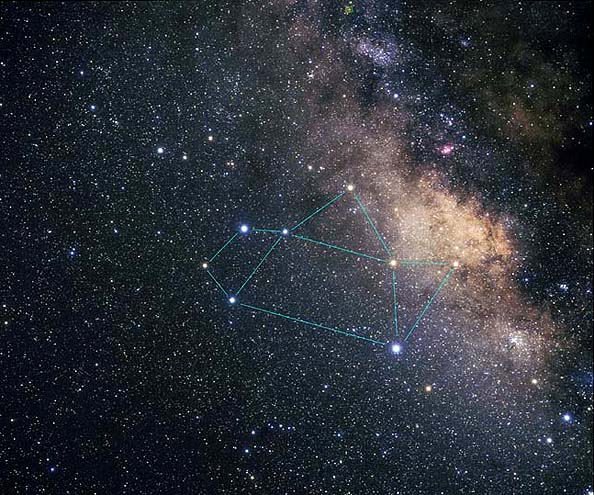 |
|
 |
The bulge of the Milky Way is more spherical than the disk and is composed of stars which are more reddish than those in the disk (===>they are more evolved or low mass, but are still considered Pop I stars). The bulge is roughly 30,000 to 40,000 light years in diameter.
The central region of the Galactic Bulge (the nucleus) is quite interesting because it shows activity in type similar to that shown by Active Galactic Nuclei, AGNs (although at a considerably lower level).
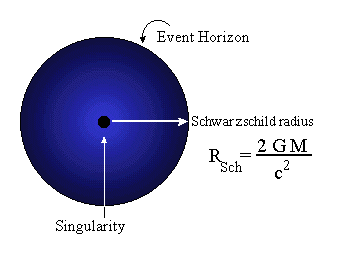 |
|
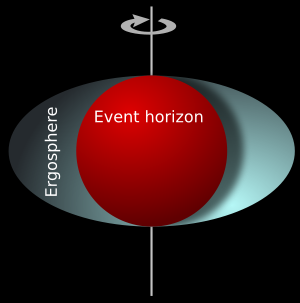 |
Spinning black holes, known as Kerr Black Holes , have interesting properties. At the Static Limit, spacetime is dragged forward at the speed of light, inside or which objects cannot be at rest. Furthermore, in the region enclosed by the static limit (the ergosphere) spacetime is dragged forward by the rotation of the black hole at speeds exceeding the speed of light with respect to a stationary observer. The inner boundary of this region is the Outer Event Horizon of the Black Hole. The region in between the Static Limit and the outer Event Horizon is called the Ergosphere. As an object falls through the ergosphere, the black hole drags it forward, speeding up its motion (gaining energy at the expense of the hole). Because the ergosphere is outside the Outer Event Horizon, the energized particle can escape to our Universe, stealing some of the energy of the Black Hole! This is known as the Penrose Process. The Penrose Process is exceedingly efficient; an object with mass M can enter with zero energy and then escape with 0.29 Mc2. This is a very efficient process. In the nuclear fusion processes which power the Sun, an amount of energy is released which corresponds to only 0.007Mc2!! |
Another interesting effect can occur inside a Kerr Black Hole. The inner boundary of the ergosphere is the outer Event Horizon of the hole, which implies there is an inner Event Horizon for the hole. This leads to a strange occurrence. At the outer Event Horizon, space and time change character, and an object inexorably moves in space toward the inner horizon. At the inner horizon, space and time change character again and the object no longer inexorably marches toward the Singularity (the ring-like feature in the figure). Instead, an observer could avoid the singularity (and perhaps even pass through it) and emerge in another apace-time; also it is possible that Closed Time-like Curves exist |
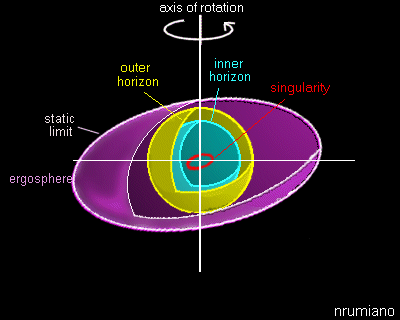 |
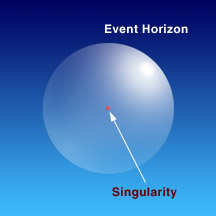
|
|
Infrared observations have revealed the presence of several stars at the galactic center and have tracked their orbital motions over roughly the last 10-15 year period. The object S2 moves in an orbit whose size is only 950 Astronomical Units ~ 1 light-week which led to the mass estimate of 3.7 million Solar masses, and the motion of object S16 which passed within 45 Astronomical Units (a little larger than the size of Pluto's orbit about the Sun), less than 1 light-day of the center of the Galaxy. Although these are tiny, tiny orbits, they are still not small enough to resolve the black hole question. To nail the question of whether there is or is not a black hole at the center of our Galaxy requires that we peer into the nucleus of our Galaxy on scales of 3 million km or ~ 1/50-th of an Astronomical Unit (or an object whose size is much smaller than the orbit of Mercury about the Sun). This is a difficult proposition. |
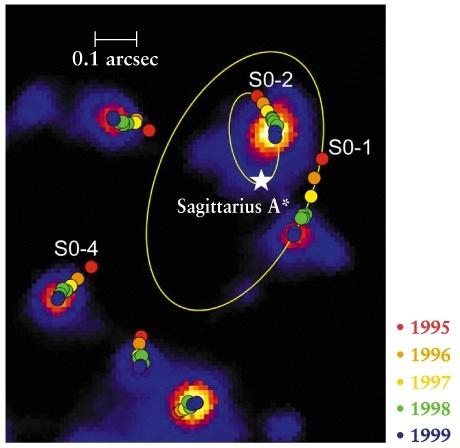 |
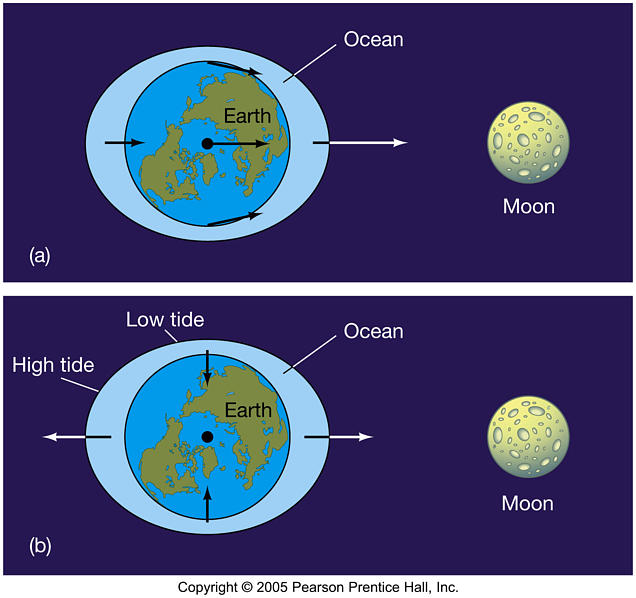 |
|
How often must the black hole eat in order to power the activity of the nucleus of the Milky Way?
The nucleus of our Galaxy produces energy at the the prodigious rate of 1033 Watts; the Sun only produces energy at the rate of 4 x 1026 Watts! Despite this huge power output, the black hole at the center of our Galaxy need only eat roughly 1 star every few million years to fuel its engine.